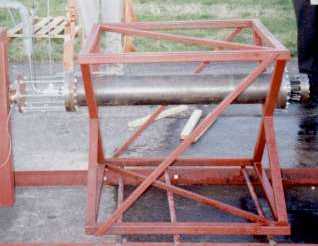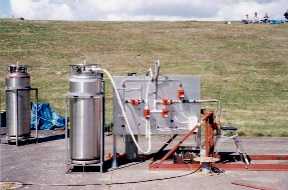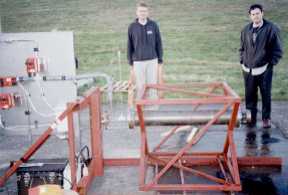

Aspirespace Rocket Engineering Society
H20 Hybrid motor
The H20 is currently the largest Aspirespace hybrid rocket engine, with a nominal 20 kg of propellant. It burns HDPE fuel (same as the H2) in liquid oxygen and is designed to generate a Total Impulse of approximately 25700 Newton-seconds, making it a lower-range 'O' class motor in High Powered Rocketry parlance.
Unlike the H2, the H20 is only near the beginning of a long development programme and it will be some time before a lightweight version is ready to fly. The current H20, designed solely for static testing, consists of a 150 mm diameter flanged steel tube, onto which a separate nozzle and injector plate are bolted. This tube is lined with a phenolic-based composite material to protect the steel from the high temperature gases (estimated at 3600 Kelvin) and has been hydraulically tested to a pressure of 70 bar. This ground-testing chamber is over-engineered for safety; it’s far too heavy for use in a rocket vehicle.





During tests, the liquid oxygen is stored in an aluminium tank, which is mounted behind the stainless steel panel shown below.
The red boxes in the photograph are electric actuators, which enable the valves to be controlled remotely from a safe distance. This photograph clearly shows the complexity of the H20 plumbing, which is necessary to minimise the risks associated with liquid oxygen. To further reduce the risk of accidents, all testing operations are carried out in accordance with a forty-page book of safe operating procedures. Aspirespace is an amateur organisation that takes pride in operating in a professional manner.
The H20 was first tested at the BG Technology site in Spadeadam in May 1999. Since then, further tests have been conducted at a new site in Wiltshire, each making a small but significant improvement on the previous performance.
When completed, the lightweight H20 will be used to launch ADV3 to an altitude exceeding 20 km.






